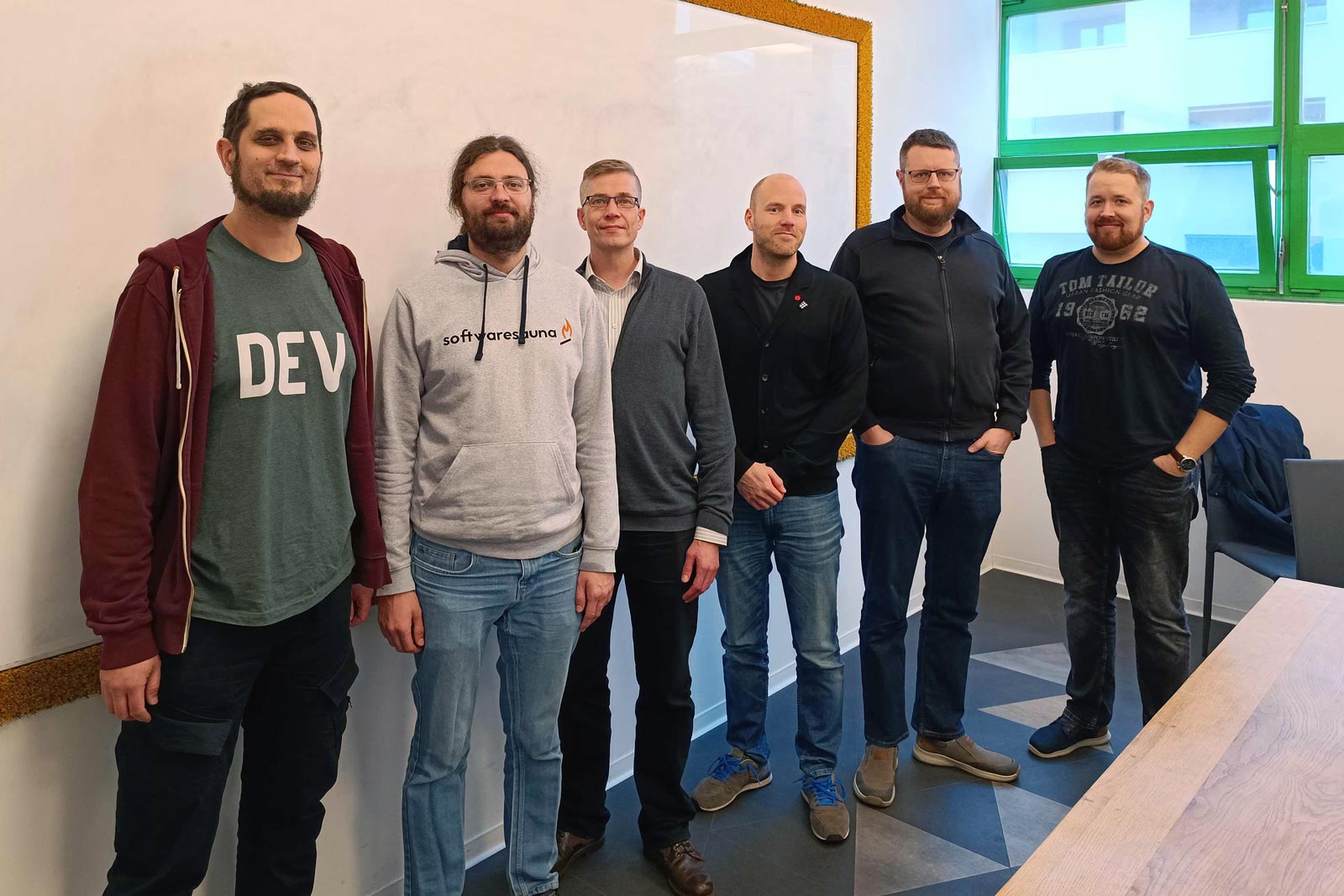6 common nearshore software development myths

Have you ever wondered why 69% of businesses face challenges due to misconceptions about nearshore software development? You might encounter sticky myths that can impact your idea of outsourcing, but worry no more – the Sauna Mythbusters are here to help. Let’s start busting!
Key takeaways
Myth 1 – Language and cultural barriers
Despite common misconceptions, Mediterranean nearshore partners frequently overcome language and cultural obstacles to collaborate successfully with Central and North European companies. English proficiency levels among developers in the Mediterranean are frequently on par with their northern colleagues, ensuring smooth communication. Additionally, many nearshore partners offer language and cultural training to guarantee efficient alignment with European standards, further enhancing collaboration.

Let’s take Croatian work culture as an example. It shares the most similarities with Central European culture, including a formal and structured approach to hierarchy and organization, a direct yet courteous communication style, and a strong appreciation for punctuality and efficiency. Both value clear professional boundaries while also emphasizing socializing with colleagues, reflecting a blend of formal professionalism with personal warmth.
Myth 2 – Compromised quality
When busting the second myth – the misconception of compromised quality in nearshore software development, it’s essential to understand that nearshore teams prioritize excellence and adhere to industry best practices. They leverage modern tools and methodologies to ensure top-notch quality in their software solutions.

Engineering teams from e.g. Croatia and the Balkan area are locally known for their expertise and commitment to quality, challenging misconceptions about compromised quality. According to Fast Company, Croatia recently had one company acquired by Google for $500 million, and has had a handful of $100 million-plus deals in the last few years. And Infobip — a bootstrapped unicorn with 80 offices around the world with clients like Uber, Bolt, Meta, and Coca-Cola — is helping set the scene.
Croatia recently had one company acquired by Google for $500 million, and has had a handful of $100 million-plus deals in the last few years.
https://www.fastcompany.com/90995354/croatia-could-be-europes-hidden-tech-haven-in-2024
Myth 3 – Time zone challenges
Time zone challenges can impact project timelines and communication efficiency in nearshore software development. However, geographical proximity within nearshore teams can help minimize these challenges and foster real-time collaboration.
Europe’s time zones are remarkably close, facilitating nearshore software development by minimizing communication delays. Central Europe operates on Central European Time (CET), just an hour ahead of Greenwich Mean Time (GMT) in the west. Eastern European countries use Eastern European Time (EET), merely two hours ahead of GMT.

This proximity allows for real-time collaboration across the continent, enabling teams to work efficiently with minimal time differences. Nearshore development in Europe offers a significant advantage, allowing for seamless integration with teams spread across multiple countries. The close time zones ensure that working hours overlap significantly, making it easier to schedule meetings, synchronize work, and maintain high productivity levels.
Myth 4 – Security risks
Nearshore service providers enforce stringent security protocols to ensure total project protection, effectively minimizing vulnerabilities and preserving the confidentiality of client data. Encrypting data is crucial for its safe transmission and storage.
Intrusion prevention systems, firewalls, and systematic security reviews are critical elements of a robust security infrastructure. Such practices guarantee data privacy and the secure management of client information.
Proactive security vulnerability identification and mitigation are achieved through regular risk assessments. Nearshore providers diligently assess potential threats and implement necessary precautions to counteract them, aligning with global data protection regulations like the GDPR to showcase their dedication to secure data management.
Myth 5 – Hidden costs
Hidden costs can significantly impact the financial aspects of nearshore software development projects if not properly identified and accounted for during the planning phase. Budget management is crucial in addressing these costs, which can stem from travel expenses, infrastructure setup, and additional communication tools.

Risk assessment is required in anticipating hidden costs, such as customization requirements, integration challenges, and unforeseen project scope changes. Resource allocation should consider these potential hidden costs to avoid budget overruns that could affect the project timeline and success. Proper cost estimation, including an analysis of hidden costs, is vital for accurate budgeting and overall project success.
Mitigating hidden costs necessitates meticulous project scoping, transparent communication, and proactive risk management strategies to ensure a more predictable software development process.
Myth 6 – Limited tech knowledge
Despite common misconceptions, nearshore developers possess extensive technical knowledge and expertise in modern technologies. The idea that they may lack skills or insufficient experience is outdated; nearshore teams often outperform their in-house colleagues, as they are constantly under training, and their expertise derives from a significantly wider scope of experience.
Nearshore teams often undergo continuous training to stay updated with the latest industry trends, ensuring they can tackle complex software development projects effectively. So, contrary to the belief of lacking resources, nearshore companies in the Mediterranean and Southern European areas offer diverse tech expertise across various domains and industries.
Myth 7 – Short-term projects only
Contrary to common belief, nearshore software development is not confined to short-term projects only. Many businesses establish long-term partnerships with nearshore teams, benefiting from ongoing collaborations and sustainable solutions.
Nearshore developers bring constant innovation and creativity, challenging the misconception that only short projects are feasible. These lasting relationships often result in reliable tech support and consistent, innovative solutions for companies with evolving needs. The flexibility and adaptability of nearshore software development make it a viable option for businesses looking beyond immediate project requirements.
Read more about long-lasting nearshore relationships:
The story of healthcare innovation: RemoTest and Software Sauna
Myth 6 – Missing legislated protection
Choosing to nearshore is often seen as a big gamble when it comes to business laws and rules. “Every country has its own rules,” people tend to think. One couldn’t be more wrong.
In Europe, the protection of the European Union only interconnects member countries through countless shared laws and policies. These include regulations ensuring free trade, competition, digital market access, and environmental protection. Member countries also adhere to common data protection (GDPR) standards, employment, taxation, and intellectual property rights.

In addition to the shared legislation, everyday life within the EU has been made super-easy: The Euro (€) simplifies nearshore and online business by removing currency exchange processes, cutting costs, and minimizing financial risks. The passport-free movement across most EU countries enables seamless and fast business trips to meet your nearshore partner.
Conclusion – all myths busted!
Busting the common myths surrounding nearshore software development reveals the potential for cost-effective, skilled, and efficient partnerships. By understanding the realities behind language barriers, quality concerns, time zone challenges, and more, you can confidently explore the benefits of nearshore collaboration.






